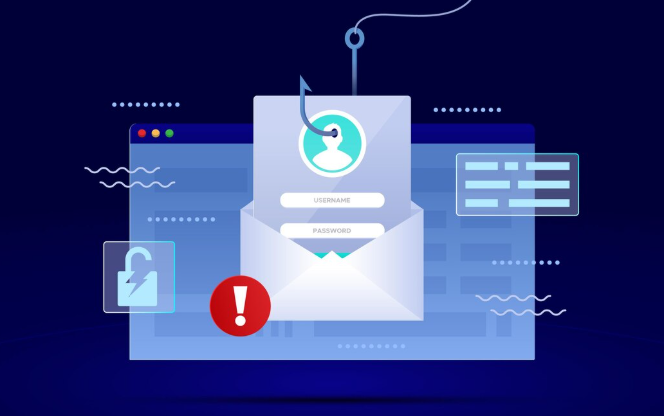In the field of cybercrime, the weakest link isn’t the software; it’s the user. In 2025, cybercriminals are no longer just coding malicious scripts; they’re studying human emotions, turning curiosity, fear, and trust into powerful weapons and applying social engineering tactics.
These are not random hacks. They are psychological chess games where the attackers know how to make humans click, trust, and panic. A “too good to be true” link, a convincing “IT support” call, and a forged HR email are all examples of encounters that can be exploited.
What is Social Engineering?
Social engineering is the art of manipulating people into doing what an attacker wants sharing credentials, bypassing procedures, or transferring money. It’s not about breaking code; it’s about bending human habits.
Social engineering has always exploited trust, not code. But the playbook keeps evolving: attackers now combine AI, public data, and old-fashioned human pressure to create scams that look and feel real.
5 Smart Ways of Social Engineering Attacks
In this feature, we’ll dissect five of the smartest and most dangerously effective social engineering techniques and tactics reshaping today’s cyber threat landscape.
1. AI-Powered Deepfake Impersonation

Deepfake impersonation is a modern twist on an old scam identity fraud. Instead of phishing emails, attackers now use AI-generated video and voice to imitate trusted individuals during live interactions. Using open-source voice samples, LinkedIn videos, or media interviews, generative models replicate tone, expression, and even micro-movements so realistically that the person on the other end sees no reason to doubt.
Red FLAGS
- Requests for urgent fund transfers or sensitive data on live calls.
- Unscheduled video meetings with unfamiliar backgrounds or lighting.
- Inconsistencies in speech rhythm, blinking, or reaction delay.
- Urgency paired with isolation: “Don’t tell anyone, just get it done.”
“In February 2024, a finance officer at the global engineering firm Arup joined what appeared to be a routine video meeting with their regional CFO. The faces looked familiar, the voices were right, and the requests were urgent. Within minutes, the employee had authorized a $25 million transfer. But the people on the call weren’t colleagues, they were AI-generated deepfakes, mimicking real executives almost perfectly”.
Ready to outsmart social engineers?
Social engineering thrives on human error but awareness turns every employee into a line of defense. Start today, keep your digital doors locked against the world’s most persuasive hackers.
2. Spear-Phishing & Business Email Compromise (BEC)

Spear-phishing and Business Email Compromise (BEC) are the corporate world’s most financially damaging forms of social engineering concepts. Unlike general phishing, which casts a wide net, spear-phishing is surgically precise — attackers research the victim’s company, hierarchy, and language style to craft messages that seem perfectly legitimate.
Red FLAGS
- Slight domain alterations (e.g., @bughontinginsights.com instead of @bughuntinginsights.com).
- Requests to rush payments, bypass standard approval, or maintain secrecy.
- Sudden changes in vendor bank details or invoice formats.
- Emails sent outside business hours or from mobile devices.
“In late 2023, a financial controller at a European import firm received what looked like a standard vendor update: a request to change the supplier’s bank account details. The email contained the right logo, identical formatting, and even copied the writing tone of the real supplier. Within 48 hours, €260,000 had been wired not to the vendor, but to an attacker.“
3. Help-Desk / IT Support Impersonation

Help-desk impersonation attacks exploit the very people who are supposed to solve problems. The attacker’s goal is simple: convince IT or HR support staff to reset a password, disable multi-factor authentication (MFA), or grant temporary access to privileged systems. Once inside, the attacker pivots laterally, often escalating privileges or stealing sensitive data.
Red FLAGS
- Callers who seem overly familiar with internal systems or names.
- Repeated requests to reset MFA or bypass normal verification.
- Emotional or urgent language to pressure immediate action.
- Unscheduled after-hours requests from “traveling” employees.
“It started as a typical morning for an IT support analyst at a multinational retailer. A caller identified himself as a senior engineer locked out of his company account. He was polite, technically fluent, and even referenced internal system names things outsiders shouldn’t know. The analyst followed reset protocol but skipped one verification step “just to help.” Within minutes, the intruder logged in as an administrator and began exfiltrating data.“
Get 20% off on your first hosting purchase. Provide everything you need to create your website.
4. Voice & SMS Manipulation (Vishing & Smishing)

Vishing (voice phishing) and smishing (SMS phishing) are social-engineering techniques that use telephony and text messages instead of email. Attackers exploit trust in familiar communication channels people treat a ringing phone or a text from a short code as inherently more legitimate than an unexpected email. That trust is the currency these attacks buy.
Red FLAGS
- Unsolicited SMS containing shortened or suspicious links.
- Unexpected calls asking for OTPs, verification codes, or remote-access installs.
- Caller IDs that don’t match known corporate numbers exactly (tiny differences matter).
- Messages claiming urgent financial obligations or account suspensions that push for immediate clicks or codes.
“Last spring a mid-level manager at a retail chain received a text: “Unpaid toll detected” click to view and dispute.” The link led to a convincing payment page that captured card details. In another case, the manager later received a call that sounded exactly like the company’s payroll clerk; the caller claimed they needed an urgent payroll correction and pressured the manager for an OTP a code the manager had just entered on the fake site. Within hours the attacker had drained accounts and sold the data on a fraud forum.”
5. Baiting and Quid Pro Quo

Baiting is a psychological manipulation technique where attackers exploit curiosity or greed by offering something appealing like free music downloads, USBs, or online deals that secretly hides malware or phishing links. On the other hand, quid pro quo attacks involve an exchange: the victim receives something seemingly valuable (technical help, prize, gift card, or information) in return for access credentials or system permissions. Both rely less on technical vulnerabilities and more on human impulses.
Red FLAGS
- “Too good to be true” freebies (USBs, giveaways, downloads).
- Tech support calls or emails offering unsolicited assistance.
- Unknown or unverified links shared as “reward” or “update.”
- In-person strangers claiming to be contractors or IT support.
- Promises of payment or benefits in exchange for login details.
“In late 2024, a cybersecurity team at a logistics company discovered a USB drive labeled “Executive Salary Data” plugged into an office workstation. It wasn’t left by an employee it was a trap. Within seconds of insertion, hidden malware began siphoning credentials and internal files. Investigators later confirmed it was part of a baiting campaign that had targeted hundreds of companies across Europe.“
Conclusion
The smartest social engineering security attacks don’t break code they break trust. From convincingly cloned voices and tightly targeted BEC scams to help-desk impersonation, vishing, and baiting, today’s attackers combine psychology, public data, and increasingly powerful tools to make deception feel real. The common thread is human reaction: urgency, curiosity, and the instinct to help.
That means the defense is equally human but disciplined. Slow down urgency, verify out-of-band, enforce multi-person approvals for high-risk actions, harden help-desk procedures, and train staff with realistic simulations. Technical controls (MFA, SPF/DKIM/DMARC, endpoint protections and mobile threat detection) add necessary friction, but they work best when paired with a culture that treats unusual requests as security events.
Installing n8n is pretty simple. For a streamlined and built-in process, check out our guide on installing n8n on Windows, which allows you to choose the best template for you with mode, or with access to 50+ pre-made workflows.
FAQ
What are the most common social engineering techniques?
Phishing/spear-phishing, BEC, vishing/smishing, help-desk impersonation, and physical baiting/tailgating remain the most common and effective techniques.
How can I protect my company from deepfakes?
Insist on out-of-band verification for financial or privileges changes and consider tech that detects manipulated audio/video.
Is SMS two-factor authentication safe?
SMS is better than nothing, but app-based authenticators or hardware keys are far more secure against SIM-swap and smishing attacks.
What should an employee do if they suspect social engineering?
Stop, document what happened (screenshots, headers), report it to security immediately, and follow the organization’s incident response steps.
What’s the best way to prevent social engineering attacks?
The best defense is employee awareness and verification. Always double-check unexpected requests and use multi-factor authentication to block unauthorized access.






